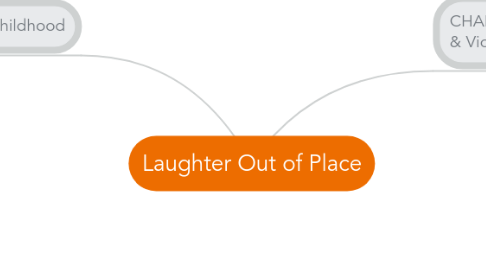Laughter Out of Place
Ariana Aubertにより


1. CHAPTER 4: No Time for Childhood
1.1. Gerson- A man who Gloria lived with for 5 years as a teenager.
1.2. Gerson found out that his son Pedro died.
1.3. Pedro was in prison on a 15 year sentence for armed robbery.
1.4. Gloria had visited him in prison bringing food and gifts.
1.5. Pedro was an energetic kid filled with anger.
1.6. While in prison, Pedro found out his girlfriend was pregnant and if she aborted it he would kill her.
1.7. After Pedro was released from prison in 1995, he rejoined his gang.
1.7.1. He was soon killed after this in a shoot out.
1.8. Because of the growing violence on the streets of Brazil, people seek shelter behind higher walls.
1.9. Director Hector Banbeco created a film to depict violence on the streets.
1.10. The children in these violent areas are used for drug trades, domestic work and street begging.
1.11. The home is known as the females domain.
1.12. Mirella- Glorias favorite goddaughter and cousin.
1.13. Mirella's husband lost a bet which forced her to sleep with the opponent.
1.13.1. Her and her sisters wanted their grandparents to take care of them.
1.14. In 1992, Felix, Soneca and Zaca were still attending school.
1.15. Gloria and Zenzinho's relationship was always rocky.
1.16. Gloria was determined to unite all of her sisters children in her household.
1.17. Gloria took Marta off the streets to live with her.
1.18. Gloria is strict on her children because she wants them to stay alive and out of jail.
2. CHAPTER 5: State Terror Gangs & Violence
2.1. Gloria's ex-son-in-law, Adilson was shot in the head 8 times.
2.2. Rio is one of the most unequal cities in the world.
2.3. Author Caldeira wrote a book called "City of Walls."
2.3.1. It is about crime and violence.
2.4. Rio started becoming more violent in the 1990's.
2.5. Gloria soon learned a lot about gangs and damage they cause.
2.6. Drug consumption was different from the poor class to the middle and upper classes.
2.7. Drug trafficking gangs were very intensive.
2.8. Felicidad was under construction in the late 70's and early 80's.
2.9. Leonel was elected governor of Rio in 1982.
2.10. Many men preferred committing crimes than low-wage jobs.
2.11. The term "police bandits" was used by the Felicidad residents.
2.12. Rio's gang culture is a form of organized crime.
2.13. Members of gangs were not allowed to own a gun.
2.13.1. The police didn't offer protection.
2.14. In Rio, when a murder occurs, no one is sure about the identity of the killer.
2.15. 1997- A video came out that showed a policeman harassing someone and then killing them.
2.16. In the "brown zones" of Rio, there are specific rules and structures that occur.
2.17. Brazilian social relations are marked by inequality.
2.18. Growing up in Rio, you know your chances of success and your place in society.
2.19. Favela residents and policeman have a violent relationship.
2.20. In Brazil, organized crime has taken over.
2.21. Anthropologist, Burdick studied 3 forms of Christianity in Brazil.
2.21.1. Pentecoastilism
2.21.2. Devotion to slave-saint
2.21.3. Catholic inculturated mass
